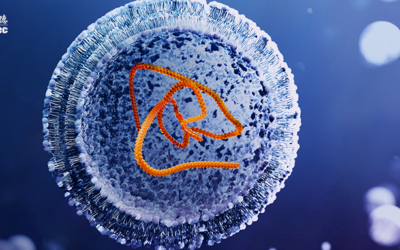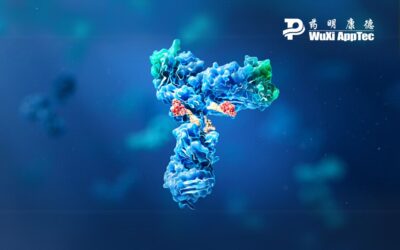Safety assessment testing is one of the most involved and complex pieces of an already time-intensive and costly drug development process. Any missteps here can have drastic implications on the rest of your development program. Here are three common pitfalls to avoid.
Nonclinical toxicology studies are only meaningful in the context of your molecule, therapeutic indication and clinical plan. This means safety assessments are not a “one size fits all” situation, requiring customization to your program. Plus, everything depends on correctly interpreting data from your ADME, DMPK, and genetic and general toxicology studies.
Because of these reasons, planning a safety assessment program is often the hardest part. Understanding the following three missteps will help you be more prepared for what’s to come – which is what planning is all about.
3 Common Missteps in Nonclinical Safety Assessment Testing
#1. Underestimating How Much a Pre-IND Package Costs
Drug development is a costly endeavor, so it’s no surprise that a cost-related misstep is at the top of the list.
Unfortunately, many researchers simply don’t know how expensive a pre-IND package is going to be. They may have a ballpark amount in mind, but then it ends up being triple the amount. When this happens, you’re left in a frenzy applying for grants and looking for additional funding – causing delays and backtracking at best and program abandonment at worst.
Toxicology often comes with that sticker shock. Due to the nature of in vivo testing, the studies are the most expensive, take the longest, and experience supply issues (resulting in pricing pressure).
Here’s what you can do to get ahead of these challenges:
- Reach out for general estimates and quotes (early).
- Understand that estimates will be lower than reality (as you add time points, animal models, etc).
- Stay on top of market fluctuations and supply shortages as you plan your budget.
- Communicate with your testing partner as early as possible so there are no surprises.
- Discuss payment options or plans.
#2. Initiating A Global IND Submission Too Late
Your end goal with nonclinical safety assessment testing is getting to first-in-human clinical trials. This requires a complete IND submission… and an idea of where you actually want to file.
Most drug developers go into the U.S. market with the FDA because it’s the biggest, second to European Medicines Agency (EMA).
No matter where you want to file your IND package, you must decide before you begin IND-enabling studies so you can tailor the work to specific requirements. If you decide to file with another regulatory agency later, you will have to change program parameters – a costly, time-consuming, and difficult task.
If you know you want to file in multiple markets, you can initiate a global IND submission. This is beneficial because required studies might overlap between agencies, saving you time and money. However, a word to the wise: Don’t assume you can initiate a global IND later because of that overlap. Miscalculated regulatory requirements can result in gaps in testing, rushed timelines, and a clinical hold placed on the IND.
#3. Delaying the Clinical Plan
Toxicology studies cannot be planned or conducted without the clinical plan. If you don’t know what clinical dosing regimen you’re going to use and the time period, you won’t be able to determine acceptable safety margins to support your clinical program, which is what these tests are all about.
Still, this is a common roadblock.
If you inquire for safety assessment tests but you don’t have a clinical program fully thought out yet, you will face push back from your testing organization. If you are already on a tight timeline, this will cause a delay that might hurt your submission window. It is critical to have the clinical route of dosing and the anticipated treatment program established to adequately plan the nonclinical program to support the IND.
Avoid this potential delay by taking the time early on to plan your clinical program fully. Ultimately, toxicology studies that do not answer the right questions are useless to your IND. So, make sure you’re on target with your test plan by knowing exactly what you want to do in your clinical. This is all about beginning with the end in mind!
Conclusion
Nonclinical safety assessment testing is a pivotal part of your drug development program, requiring rigorous planning. Tests range from general toxicology and safety pharmacology to carcinogenicity, and decisions need to be made about specific assays, species, and routes of administration.
The process is substantial, but you’re not in it alone. Many drug developers seek to work with a laboratory testing partner to help manage timelines, plan the right studies, and meet regulatory requirements. In fact, many of the above missteps can be avoided when you find a partner early in the development process.
With the right partner and shared goal – developing a safe and effective drug – you will be set up for success when planning your safety assessment program.
Learn more about WuXi AppTec’s Safety Assessment services or talk to one of our experts by contacting us today.
As a global company with operations across Asia, Europe, and North America, WuXi AppTec provides a broad portfolio of R&D and manufacturing services that enable the global pharmaceutical and life sciences industry to advance discoveries and deliver groundbreaking treatments to patients. Through its unique business models, WuXi AppTec’s integrated, end-to-end services include chemistry drug CRDMO (Contract Research, Development and Manufacturing Organization), biology discovery, preclinical testing and clinical research services, helping customers improve the productivity of advancing healthcare products through cost-effective and efficient solutions. WuXi AppTec received an AA ESG rating from MSCI for the fourth consecutive year in 2024 and its open-access platform is enabling around 6,000 customers from over 30 countries to improve the health of those in need – and to realize the vision that “every drug can be made and every disease can be treated.”


